

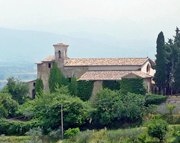
In 1494, Pope Alexander VI approved a request from the Observant Franciscans of the Convento di Sant' Onofrio to build a new church and convent on the site of the chapel of the fortress of San Manno. The friars were able to move to the new complex in 1502.
The complex was suppressed in 1809, when Giuseppe Bianconi stepped in to protect the church and convent, including its library. The friars returned in 1816 but the complex was definitively suppressed in 1866.
-
✴The original choir stalls (ca. 1502) from the church are now in the Sala Consigliare of Palazzo Comunale.
-
✴A fragment of a sarcophagus (3rd century AD), which was documented in 1840, when it served as the architrave of a door in the convent, is now in the Museo Civico.
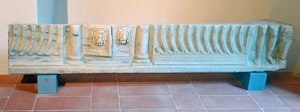
Art from the Church
St Antony Abbot (16th century)
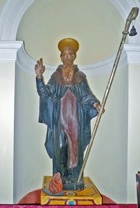
The following are now in the Pinacoteca Civica.
St Antony of Padua (ca. 1512)
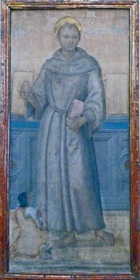
Madonna della Misericordia with saints (16th century)
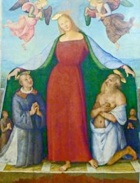
Virgin in Glory with Saints (1547)
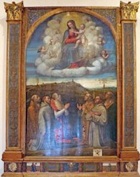
The main panel depicts the Madonna and Child in a mandorla of clouds and pitti, with a townscape of Bettona below. In front of it are six kneeling figures: SS Crispoltus; Francis; Jerome; (?); Antony of Padua; and Louis of Toulouse.






